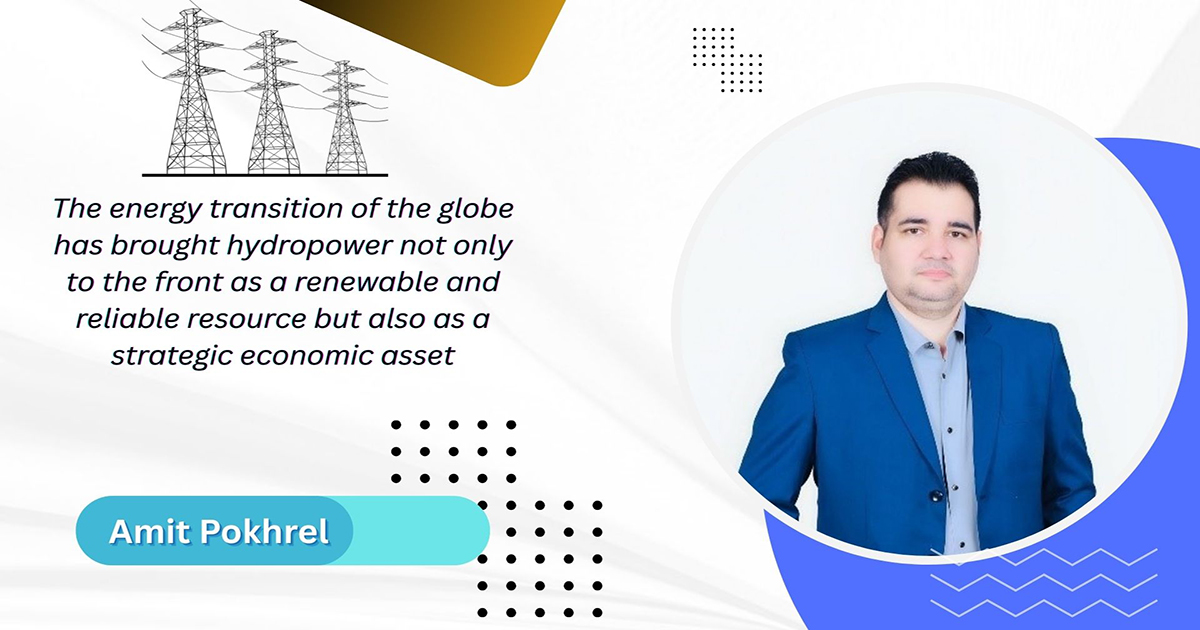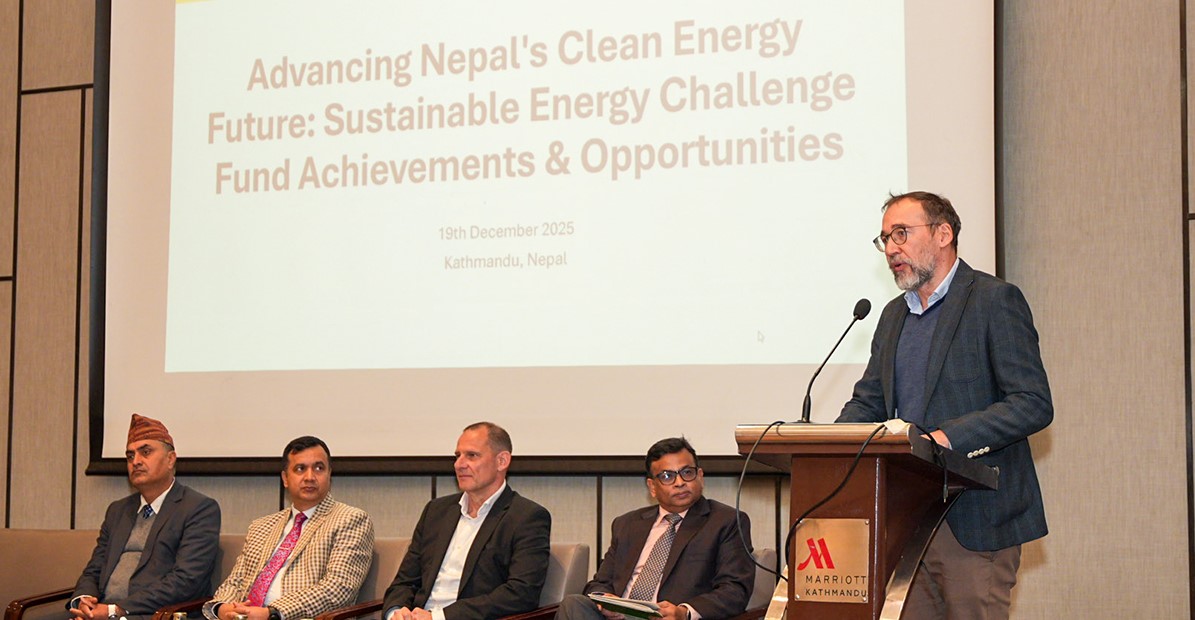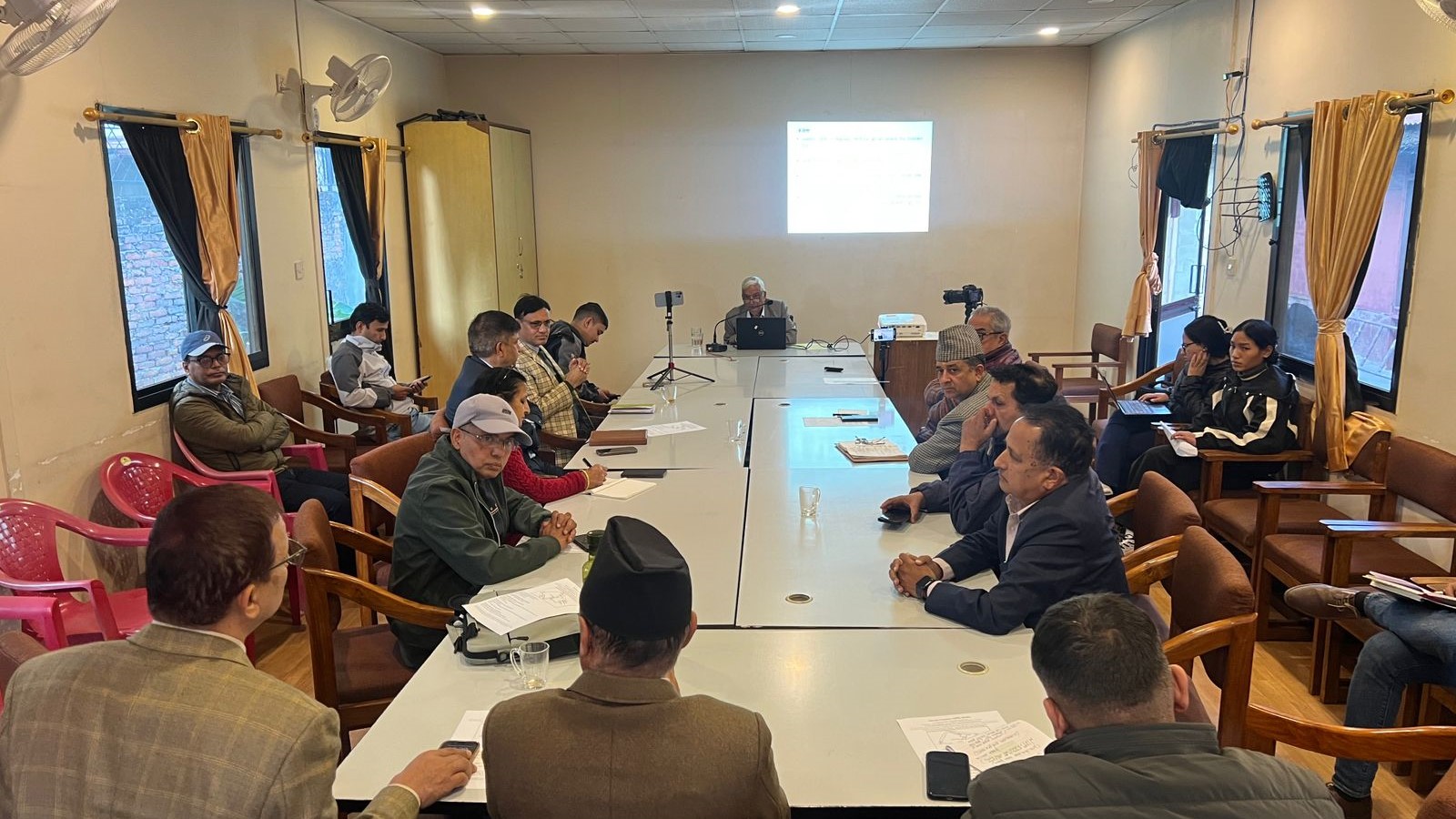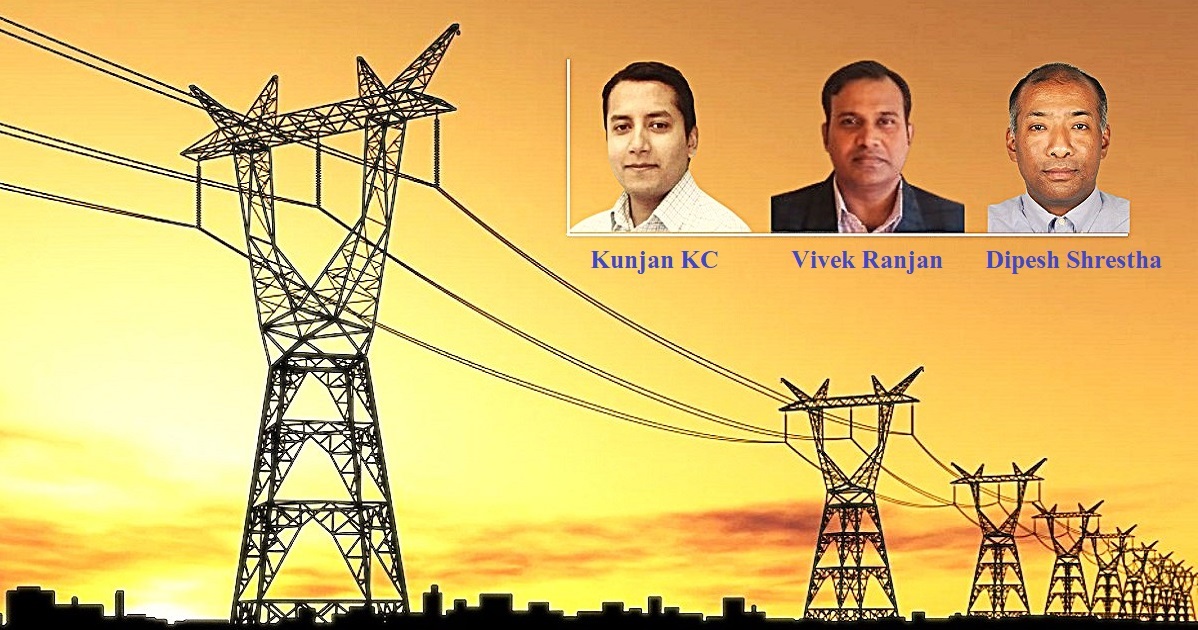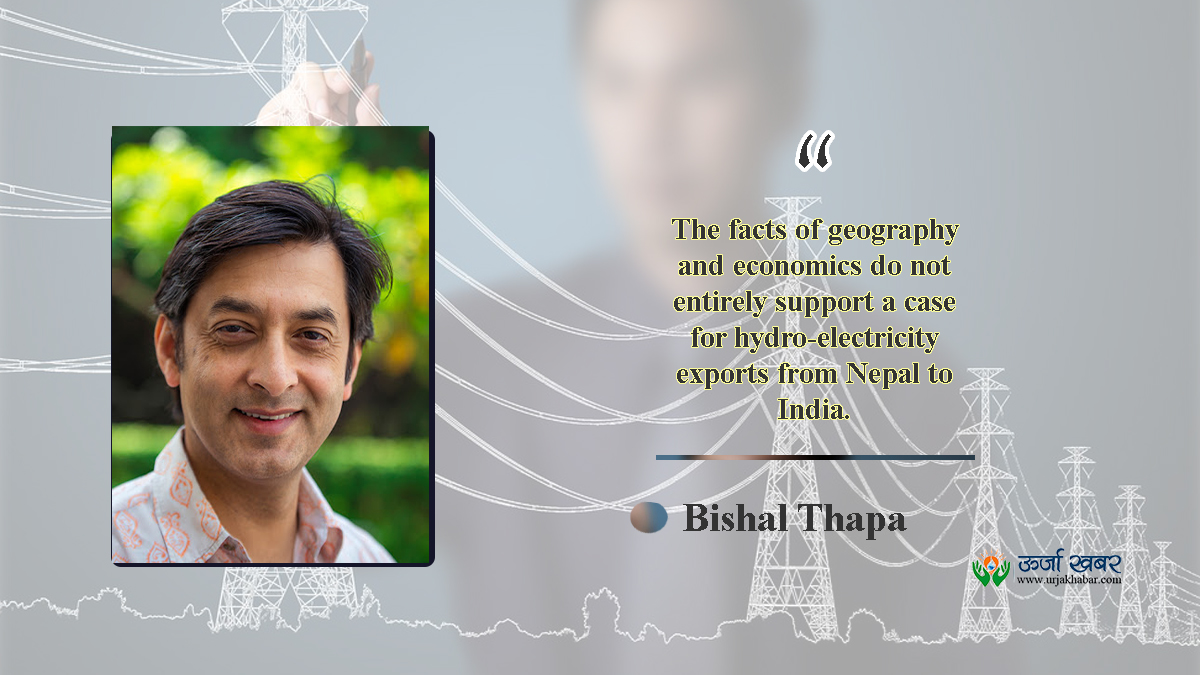Energy Update
Russia Pledges to Expand Green Energy Initiatives
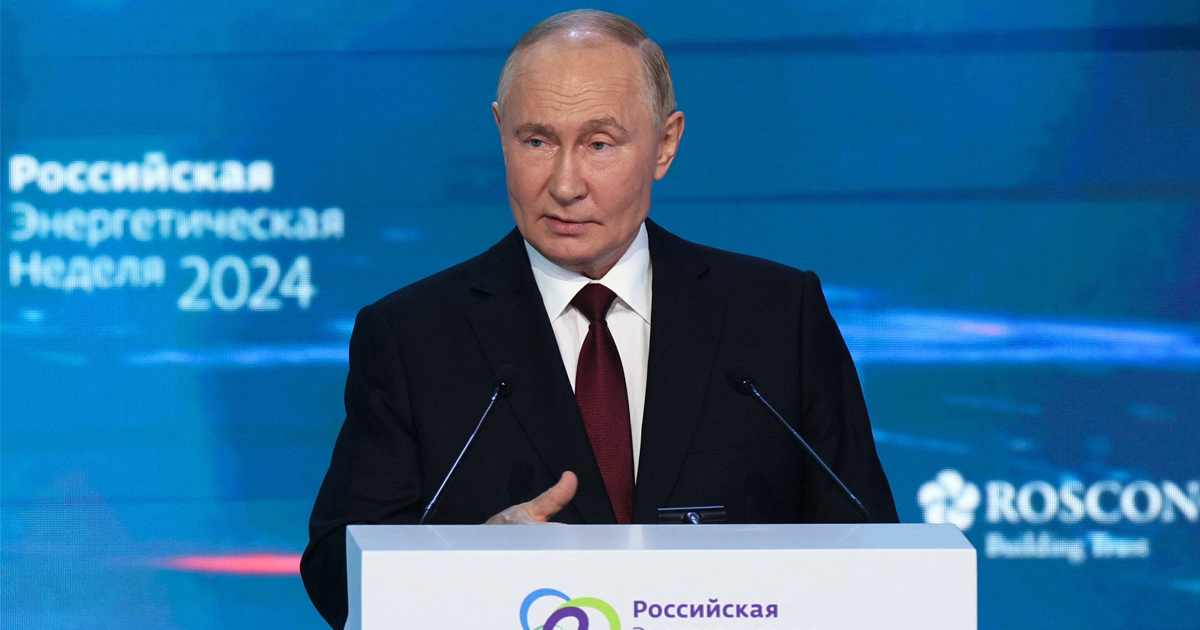
In recent decades, Russia has established itself as a prominent leader in global energy development. Its influence extends beyond Europe and the Americas, playing a pivotal role across Asia and South Asia. In this context, with permission from the Russian Embassy to Nepal, Kathmandu we put it as article format, an edited excerpt from the address delivered by Russian President Vladimir Putin during the 7th Russian Energy Week, Which was held in Moscow on September 26-28, 2024.
More than 4,000 participants from over 50 countries participated in Russian Energy Week International Forum this year. They discussed the most important issues on the energy agenda, and the challenges that both producers and consumers of energy resources are facing around the world.

Modern energy is one of the key sectors enabling global development. Its smooth operation based on transparent and predictable rules, when deposits are developed and resources are extracted, processed and supplied to the market without interruption, creates a solid foundation for economic growth, social progress, and improvement of the people’s living standards.
Historically, the main elements of the supply infrastructure of the global energy market used to be consolidated in the West. Taken together, innovative mining solutions, logistics, insurance of resource supply, and the system of payments for these operations, constitute a global energy platform on a par with technologies.

Closing access to its platform has only encouraged the development of alternative solutions, alternative logistics, insurance and international settlement systems, as well as technological innovations.
These solutions are mostly immune to external influence. And since they are being gradually shaped on a fundamentally new technological basis, they are becoming more effective by the day and, which is even more important, more widespread, first of all in the countries that are gathering momentum and demonstrating a high economic development pace.
The modern world has entered an era of fundamental and irreversible changes. A multipolar development model is emerging, starting a new wave of global growth for the rest of the 21st century. And this growth will be concentrated not in Europe or North America. There will be gradual shift in growth drivers. In 1992, the G7 accounted for 45 percent of global GDP, while BRICS had just 22 percent. As of the end of 2023, the G7’s share declined to 30 percent, while BRICS increased its share to 36 percent. And this trend is gaining traction.
According to international experts, several BRICS countries, including the People’s Republic of China, the Russian Federation, the United Arab Emirates and Saudi Arabia will enjoy positive, albeit quite modest, economic trends. Once again, this is what experts have been saying, including international experts. At the same time, the countries of what we call the Global South will lead the pack in terms of economic growth rates. For now, their per capita GDP is quite low, and so is the share of people living in cities, but they have a high birth rate. This group primarily includes countries in South and Southeast Asia, as well as Africa, including Equatorial Guinea.
Russia claims to have adopted the models of nuclear and hydraulic power industries that have a minimal carbon footprint, one of the ‘greenest’ in energy balance in the world.
There is a need to build an effective development platform for countries that are promising growth centers now or will become ones – a platform free from malign outside influence, with unimpeded access to resources, technology, personnel, finance, trade and investment. In this regard, the energy sector in particular, is crucial for economic growth and social progress.
Russia remains one of the leading participants in the global energy market. Over the past two and a half years, Russian companies have successfully redirected their exports of oil, petroleum products, and coal. Previously, the AsiaPacific region accounted for about 39 percent of our energy exports, but by the end of last year, its share exceeded 60 percent.
Russia is expanding the geography and scale of its energy cooperation. New routes are being created to connect to fast-growing receptive markets, including the countries of the EAEU, the CIS, and southern Eurasia. Gas exports through the Power of Siberia pipeline are increasing, and LNG exports continue to grow.
LNG from the Russian Arctic has become one of the anchors, the main type of cargo shipped via the Northern Sea Route. Russia has expressed its commitment to continue to develop its LNG services and technologies, create centers for its transshipment, storage and trade. The country has planned to mobilize sufficient tankers for its LNG projects, augment the capacity of our Arctic and Eastern seaports, improve communications and enhance the Northern Sea Route infrastructure.
Russia in its plan is expanding international transport corridors. Freight traffic on these routes is scheduled to increase by at least 50 percent by 2030 compared to 2021. While developing the Eastern Operating Domain, the throughput capacity of the BaikalAmur Mainline and the TransSiberian Railway, which is nearly 180 million tons this year, will grow to 270 million tons in ten years. This is expected to enable Russia to transport large volumes of fuel and energy products and refined products from the regions in Siberia to markets of the Global South.
To resolve various problems related to the system of payments, Russia is switching its trade settlements to national currencies, which is of great interest to its partners. In the gradual development, between 2021 and 2023, the share of the ruble in export payments has grown nearly threefold to 39 percent, and the figure reached 39.4 percent in the first six months of 2024.
In addition, the BRICS countries have been developing their own payment configuration that is expected to provide conditions for servicing all foreign trade efficiently and independently.
Russian energy exports could help allied countries restrain the growth of import prices, maintain their energy security and economic stability, as well as compete more successfully in the global market.
Russia expresses its commitment not to limit cooperation to trade in resources. The country further states that is ready to help strengthen the technological sovereignty of its partners in the energy sphere by creating comprehensive scientific and production chains. The similar cooperation is being done in the peaceful use of nuclear technology. Rosatom is building nuclear power plants abroad and simultaneously training local personnel –engineers, workers and managers for the new facilities. It will not be limited to the country itself but will create new power generation and economic sectors for its partners.
While Russia saw immense growth in domestic energy consumption last year, setting a new record that exceeds the Sovietera indicators, its energy system is claimed to have met the growing demand from businesses, the economy, and the social sphere, but also is in the process of qualitative transformation.
Over the past 15 years, the total capacity of the Russian power industry has increased by 18 percent, while the power plants themselves have undergone an in-depth overhaul, becoming more advanced, effective, and environment-friendly. For example, natural gas, an ecologically clean and effective hydrocarbon, accounts for 48 percent of Russia’s energy balance and for over 85 percent.
Russia claims to have adopted the models of nuclear and hydraulic power industries that have a minimal carbon footprint, one of the ‘greenest’ in energy balance in the world. The country says, it will continue to upgrade and strengthen our energy system, which has entered upon a stage of retooling and conversion to new technological solutions.
The country has focused its substantial scientific and practical potential in a number of promising areas, such as renewable energy sources, small nuclear power plants, thermonuclear fusion, as well as hydrogen generation and production of motor vehicles, ships, and rail transport burning this kind of fuel. Research and technologies are at different stages of implementation in this regard.
It is important to be aware of this outlook and make plans for the future. The forward-looking approach is reflected in systemwide projects with long investment cycles, projects to master new technology, develop deposits and build the necessary infrastructure, power stations and grids.
The key priority is to satisfy demand on the domestic market and to ensure stable and affordable power supplies to the country’s own regions, cities and companies. The country puts its emphasis that the fuel and energy sector must play its role in ensuring that all the 2030 national development goals are fulfilled.
According to the available estimates, power consumption will grow at an [annual] rate of two percent until the end of this decade in the world. During this period, Russia intends to launch 27 gigawatts of new power generating capacity, including thermal, hydro and nuclear power plants.
To ensure the reliability of power supply to the regions, Russia has applied a fundamentally new approach-- introduction of territorial grid organisations. The project starting in 2025, will operate in each region of the country and will be responsible for power supply.
In addition, the country looks forward to promote connectivity between the power grids in the Urals, Siberia and the country’s east, while paying special attention to supplying power to Russia’s Far East as power consumption there has been growing at a rate exceeding the national average, and it is expected to increase even more as manufacturing expands and as new housing, infrastructure and social facilities are built. The country is firm that the energy sector must be able to meet this demand by using modern coal power generation, with low environmental stress.
To ensure the reliability of power supply to the regions, Russia has applied a fundamentally new approach-- introduction of territorial grid organisations. The project starting in 2025, will operate in each region of the country and will be responsible for power supply. They will also take over abandoned facilities (unfortunately, there are some) and address the consequences of accidents on networks, among other responsibilities.
The Russian gas industry, which is undergoing serious changes, is not only reorienting exports from the west to the east but also significantly increasing supply to the domestic market, including under the social gas supply program launched in 2021, which is progressing at a good pace. The country has put forth its extensive plans to supply gas to all Russian regions and increase gas processing within the country.
Next, the growth of hydrocarbon processing volumes at Russian plants and complexes is another priority task for the domestic fuel and energy complex. It is crucial to provide a raw material base and the necessary resource extraction. For this purpose, the Russian government is providing special tax incentives to the firms.
The energy projects in offshore fields, such as Prirazlomnoye in the Arctic and projects on Sakhalin, are being developed. Hard-to-recover reserves are being developed: the Palyanovskoye oil field in the Khanty-Mansiysk Autonomous Area and the YuzhnoNeprikovskoye field in the Samara Region. New oil and gas provinces are being introduced in Eastern Siberia and the Arctic. The coal mining center in the Far East is expanding its capacity. The Pacific Railway, is starting its operation next year. It is a private railway going from the Elga field in Yakutia to the port of Elga in the Khabarovsk Territory.
It is essential that the exploration of Russia’s unique reserves makes it possible to develop domestic processing enterprises, creating maximum added value in Russia. The country has launched a state program to upgrade oil refineries. Its goal is to provide the economy, cities, all populated areas and people with high-quality fuel, lubricants, bitumen, and other products.
Special focus must be placed on the development of oil, gas, and coal chemistry. According to estimates, the demand for these products will only grow both in Russia and around the world. Moreover, these sectors are highly profitable. The price from raw materials to final goods in the chains can grow up to 12 times.
Russia implements projects in this sphere, which are large even by global standards. The country’s largest petrochemical plant, ZapSibNeftekhim, is operating, and the Amur Gas Chemical Complex, which will become the most powerful Russian enterprise for the production of basic polymers, is being built. There are other large projects as well. It is important that there be more such projects, that new production facilities are opened in various regions and modern, well-paid jobs are created.
Furthermore, it is clear that, under current conditions, the reliable operation of production fields, pipelines, refining facilities, and power plants, as well as the fuel and energy complex in general, is dependent on the availability of our own specialists, technologies, and competencies in the equipment used for producing and delivering resources, power engineering, and so on.
A national project to be launched next year will serve as a major system-wide instrument of support for domestic initiatives. It is called New Nuclear and Energy Technologies. This national project will set ambitious goals, namely, to consolidate Russia’s global leadership in the nuclear sector.
Russia’s fuel and energy complex is a modern, dynamic industry. The country claims to have successfully met current, including global, challenges and strengthens the raw materials, technological, and industrial sovereignty of our country; it supports and develops trade and cooperative ties with responsible foreign partners. Russia is fulfilling its obligations to supply energy resources to the world market and plays a stabilising role within it, participating in such authoritative formats as OPEC Plus and the Gas Exporting Countries Forum.
The country is firm that it will accomplish the strategic and long-term tasks facing its energy industry. It is committed to contribute to balancing the world energy markets for the sake of sustainable global development.
Originally published on the official website of the President of the Russian Federation (en.kremlin. ru/d/75185)
Conversation
- Info. Dept. Reg. No. : 254/073/74
- Telephone : +977-1-5321303
- Email : [email protected]






